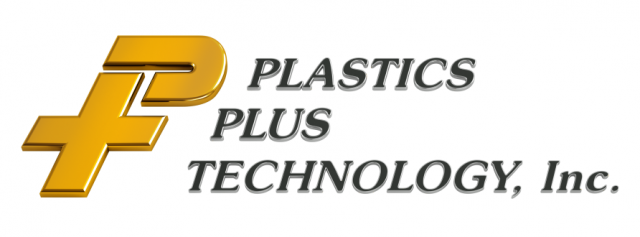Eliminating Fasteners with Ultrasonic Welding
Eliminating Fasteners with Ultrasonic Welding
Thermoplastics are used in the vast majority of products manufactured today. Many of these products utilize screws, pins, and threaded inserts for fastening and joining; while these methods might be the best choice for assemblies requiring serviceability, there may be more cost-effective methods of assembly for those that don’t. In some cases, we can replace or eliminate fasteners by welding components together leading to reduced cost and less complexity. One common process that Plastics Plus Technology, Inc. can utilize to weld plastic components is called Ultrasonic Welding.
Ultrasonic welding is a process that utilizes high-frequency mechanical vibrations to generate frictional heat between two components. The heat generated causes the thermoplastic to melt at the mating surfaces and once cooled, creates a strong mechanical bond.
This process works well for many different types of thermoplastic polymers but all plastics are not good candidates for ultrasonic welding. The broad softening temperature of Amorphous thermoplastics makes them good candidates for welding. These materials include PC or ABS. Semi-crystalline materials like nylon can be welded but they are much less forgiving since they don’t have a broad softening point. It takes a lot more energy to make these materials melt since they have natural properties that will absorb the vibrations produced by the ultrasonic welding equipment. Material choice is very important when considering the option of ultrasonic welding.
On occasion, different types of materials may need to be welded together. In this case, an analysis of their mechanical properties, melt temperatures, and chemical compatibility should be completed to evaluate the effectiveness of the weld. Many materials will not weld together properly. PPT can offer guidance on what materials will work best.
How Does an Ultrasonic Welder Work?
Ultrasonic welders consist of several components: a piezoelectric transducer, a booster, and a sonotrode (horn). These parts are tuned to resonate at a specific ultrasonic frequency. The piezoelectric transducer (also known as a converter) changes electrical energy into mechanical vibrations. These vibrations are transmitted through a booster which modifies the amplitude of the vibration and transmits it into the sonotrode. The sonitrode is a tuned metal rod that focuses the ultrasonic vibrations into the parts. These vibrations cause friction that melts the parts together.
In this example, we will weld a lid onto a small box-like component. The operator places the component into the nesting fixture and places the lid on top. When the machine is cycled a ram moves the ultrasonically vibrating sonotrode or horn up against the parts. The nest securely holds the part in place while the lid is vibrated with the horn. After a short period of time, the weld is completed and the ram retracts moving the horn up where the cycle can be started again.
How to Know if Ultrasonic Welding is Right for You
Whether ultrasonic welding is right for you depends on a few factors:
- If your product does not contain serviceable parts
- Consists of two or more mating components
- Needs to encase or house non-accessible electronics
- Meets the material requirements (refer to material datasheet)
- Features fasteners like screws, threads, pins, and more
Contact us and fill us in on our current assembly operation. Then we can determine a plan that might save you money in the long run.
